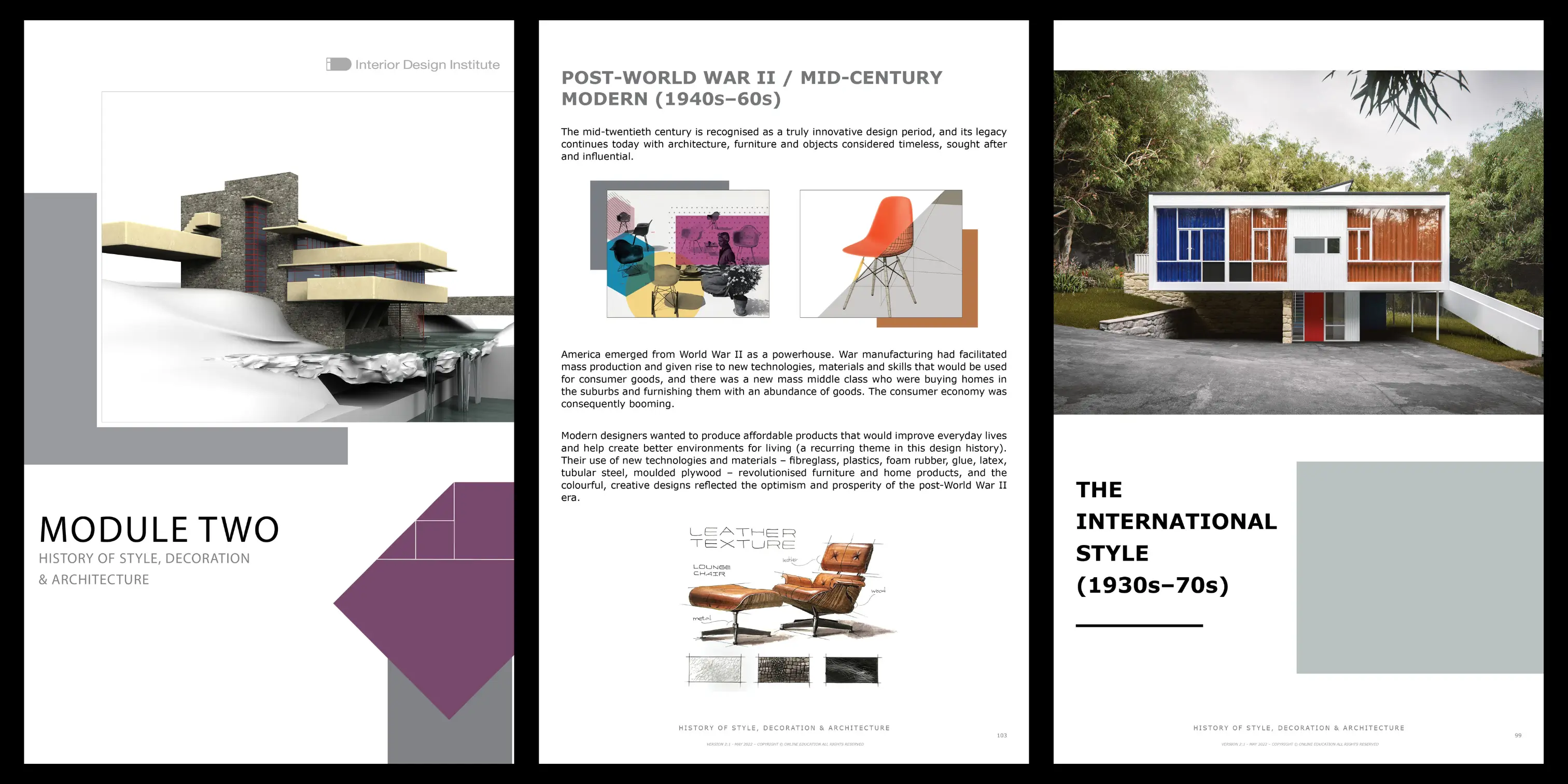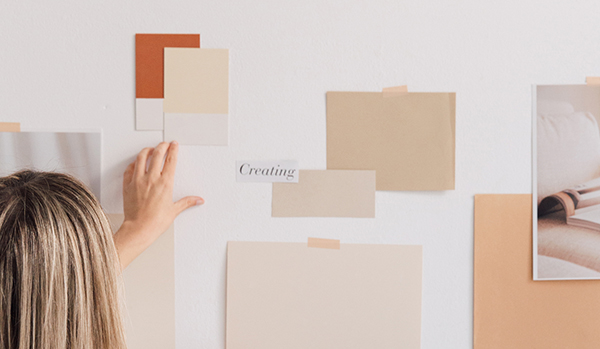Module 2: History of Style, Decoration and Architecture
This module is part of the Diploma of Interior Design (MSF50222) at IDI and provides a comprehensive exploration of style, decoration, and architecture from antiquity to the contemporary era. You will trace the evolution of design across centuries, examining the socio-cultural, technological, and artistic influences that shaped architectural forms, interior spaces, decorative motifs, and furniture design. By analysing historical precedents, you will develop the ability to interpret design language, recognise patterns of influence, and understand the symbolic meanings embedded within interiors and built environments.
Through immersive visual study, analytical exercises, and practical research tasks, you will uncover the stories behind iconic movements and influential designers. This module emphasises the connection between past and present, enabling you to integrate historical knowledge thoughtfully into contemporary design projects. You will explore classical antiquity, Renaissance innovation, Baroque grandeur, the emergence of modernism, and the development of postmodern and sustainable design practices, gaining a nuanced understanding of the continuity and evolution of style over time.
By the end of Module 2, you will not only recognise and describe historical styles and architectural details with confidence but also critically assess their relevance and application in modern interiors. You will develop a sophisticated designer’s eye, capable of drawing inspiration from history to inform innovative, contextually sensitive, and aesthetically compelling interior spaces.

Why This Module Matters
Understanding design history is essential for every interior designer. By exploring how architecture, decoration and style have evolved, you’ll:
- Learn to recognise architectural and decorative details influenced by Greek, Roman, Egyptian and later movements.
- Incorporate historical styles into your own designs, adding originality and depth.
- Appreciate how past movements influence the present and continue to shape the future of design.
As part of the Diploma, this module features assignments, quizzes, portfolio development, and exclusive content designed to equip you with the knowledge, skills, and professional confidence to excel in the interior design industry.

What You’ll Learn
-
Introduction to Design History
Why design history matters and how it shapes interior practice today.
-
Key Historical Movements
A guided tour from Ancient Greece through to Contemporary and Minimalist trends.
-
Art, Furniture & Cultural Influences
How material culture and furniture design reflect social and artistic change.
-
Linking Past to Modern Design
How historical motifs and methods inform contemporary interiors.

What You’ll Do
-
Analyse Historical Styles
Examine how form, ornament and proportion define each period.
-
Identify Historical Influences
Trace cultural, technological and material drivers across styles.
-
Recognise Characteristic Features
Spot signature exterior and interior details — spires, cornices, motifs and more.
-
Apply Historical Knowledge
Use historical references thoughtfully in contemporary design projects.
Units Covered
This module integrates practical skills from the following accredited units:
- CUADES305 – Source and Apply Information on the History and Theory of Design: You’ll research and interpret historical and theoretical design influences to strengthen your creative approach and contextual understanding.
- MSFFDM4021 – Research Furniture Styles and Movements: You’ll explore key furniture design movements, tracing their origins and understanding how stylistic evolution informs contemporary practice.
These units are taught through visual analysis, historical research, and practical design exercises, helping you develop a deep appreciation for the evolution of style, decoration, and architecture.
Module Topics
In Module 2, we will cover the following topics and beyond:
- Introduction to History of Style, Decoration and Architecture
- What is Design History?
- Why Learn Design History?
- About this Design History
- Classical
- Ancient Greece (1000–100 BC)
- Ancient Rome (500 BC–500 AD)
- Byzantine (500–1500)
- Moorish (700–1500)
- Romanesque (800–1200)
- Gothic (1150–1400)
- Renaissance (1400–1600)
- Baroque (1590–1725)
- Rococo (1715–90)
- Neoclassical (1714–1850)
- Palladianism – Britain (1715–1800)
- Georgian / Colonial – Outside Of Britain (1714–1830)
- Federal – USA (1780–1830)
- Greek Revival – Britain (1790–1850), USA (1830–60)
- Furniture Designers
- Empire – France (1799–15)
- Industrial Revolution (1760s–1850s)
- Victorian (1837–1901)
- Gothic Revival
- Italianate
- Queen Anne
- Victorian Interiors and Furniture
- Arts and Crafts Movement (1870–1910)
- Art Nouveau (1880s–1914)
- Art Deco
- French Art Deco (1920–39)
- American Art Deco (1925–39)
- Art Deco Around the World
- Modernism (1917–33)
- De Stijl (1917–31)
- Bauhaus (1919–33)
- Le Corbusier
- The International Style (1930s–70s)
- Post-World War II / Mid-Century Modern (1940s–60s)
- Pop (1960s–70s)
- Postmodernism (1970s–90s)
- Minimalism (1990s to Today)
- Contemporary
- Sustainable Architecture and Design
- Sustainability in Design History
Module Outcomes
By completing Module 2, you will:
- Gain a comprehensive knowledge of style, decoration and architecture from antiquity to today.
- Learn to identify and interpret decorative and architectural features.
- Incorporate historical references into your own creative work with confidence.
- Understand the enduring influence of design history and its role in shaping contemporary practice.
Guidance Every Step of the Way
As with every stage of your learning, our expert tutors will guide you through Module 2 with passion and insight. They’ll help you make sense of historical detail, connect past and present, and show you how to apply these influences to your own designs.
Discover the Modules
Explore our course outline page to learn more about the other modules.
View Course Outline


